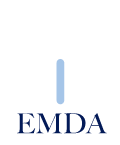
© copyright 2013-15, Disclaimer
Powered by Pelvitec
Frequently Asked Questions.
EMDA
Optimal treatment of superficial bladder tumours
- What is EMDA?
- EMDA stands for: 'Electro Motive Drug Administration' and it is based on the ancient "iontophorese technique" which facilitates the transportation of a certain medicine deeper into the body, to exactly the right spot, by means of an electrical potential difference.
- How does EMDA work?
- A medicine (chemotherapy, usually ‘Mitomycine’) is inserted through a catheter that is placed into your bladder. In addition, two sponge electrodes are placed on your abdomen. Both the catheter (which is equipped with a small metal plate) and the pads are connected to a device that can generate a gentle direct current. An electric field (the potential difference between the metal plate on the catheter and the electrodes on your abdomen) ensures that the positive-charged medication moves towards the negative-charged pole (i.e. the pads on your abdomen) following the line of least resistance.
It has been scientifically proved that, by applying EMDA, the medication penetrates deeper into the bladder wall, which considerably decreases the chance of the tumour recurring after the operation. - Is the treament unpleasant?
- No, you will hardly or not feel anything of the EMDA-treatment.
The light current will cause no more than a light tingling sensation of the abdomen skin (under the
sponge electrodes). The nurse will subsequentlymove the pads somewhat so as to make the tingling
disappear. - How long is the treatment time?
- The EMDA-treatment will take 30 minutes.
- Are there any side effects or other risks?
- Some patients may experience a tingling sensation under the sponge electrodes on the abdomen. This may occasionally be felt as unpleasant. Usually the nurse can solve this by putting a little more gel or water under the electrodes or by moving them slightly.
No other risks or side effects (directly related to EMDA) are known. - Is the treatment expensive?
- Based on the existing publications, the use of EMDA will help achieving major cuts in spending because fewer tumours will recur and if the tumour recurs at all, it will (on average) happen after a longer period of time ('the disease-free interval' is longer)
Presuming that the scientific publications on the effectiveness of EMDA are correct, the use of EMDA leads to major financial savings. - How effective is the EMDA-treatment?
- The effectiveness has to be proven by means of scientific publications.
By activating the links on the page ‘The efficacy’, you will find ‘comprehensible’ results of a few papers published. - Which hospitals in Europe and Canada are the using EMDA?
- Please contact Physion srl and ask for the address of a hospital in your country using EMDA for bladder cancer.
- Why is EMDA for bladder cancer not used in every hospital?
- 1. In general, medical specialists are cautious as to the introduction of new medical technologies.
That is only natural as new techniques often involve unidentified risks. In addition, one may call into question whether it is justified to deny a patient the accepted "gold standard treatment" and to treat him/her with an unknown, unproven method. The EMDA treatment does not have to entirely substitute an existing treatment; it adds something extra.
2. Another reason for this treatment to be not used in every hosptal is the critical attitude towards the scientific EMDA publications: these papers have mainly been published by one group of hospitals in Italy. In the 'world of scientists' it is important that positive results reported by one single research group have been reproduced by another research group in order to accept the results as 'valid'.
However, the good news is that, in the United Kingdom, a research group also showed positive results of EMDA with Mitomycine in the treatment of 'high-risk' patients in June 2012.
3. So far, the EMDA treatment has not been identified as the first line option (‘golden standard’) in the International treatment guidelines for superficial bladder carcinoma. Specialists are considered to take these into account but may deviate from them if they have good reasons to do so. The modification of regulations is a long process. Professor Oosterlinck from Ghent (Belgium), until recently Chairman of the European regulation group 'Superficial Bladder Carcinoma' wrote in a recent article that publications about EMDA have to be taken seriously. Meanwhile he has started the treatment in Belgium too.
4. The use of EMDA catheters leads to extra costs that are, so far, not covered by most of the health insurers - For which type of bladder cancer EMDA can be used?
- EMDA has been especially developed for the treatment of superficial bladder tumours. It improves the effectiveness of the medication that is administered into your bladder and that is to prevent the tumour recurring or developing into a more malign type of tumour.
- How reliable and/or objective is the information on this website?
- The information we publish on this website has been checked by medical specialists. The quality mark is meant to guarantee the quality of the information presented.
In case you are of the opinion that the information on this site is incorrect, please communicate as such by means of the contact form on our website.
On this website we only present the advantages and disadvantages of our products.
You can take this information with you when seeing your medical specialist.
Your specialist is the only person who has an overall insight into your condition and he/she has knowledge of the advantages and disadvantages of other methods of treatment. Together you can choose the most suitable course of treatment.
